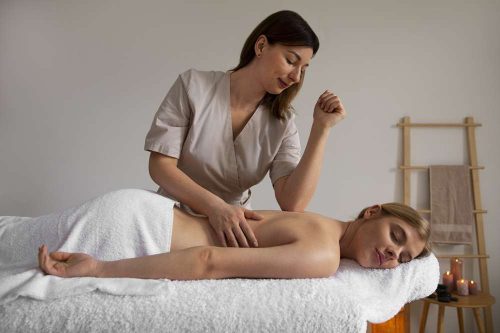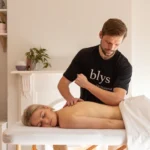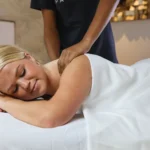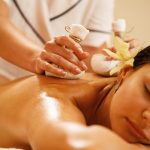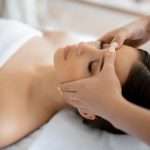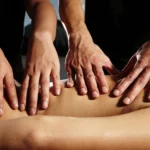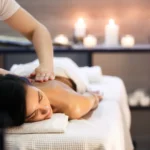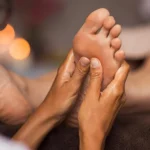Are you curious about what is full body massage? According to the National Institutes of Health (NIH), massage therapy is increasingly recognized as a complementary approach in healthcare settings for managing pain, anxiety, and various physical conditions. A full body massage is a therapeutic practice involving the systematic manipulation of muscles, tendons, ligaments, and soft tissues from head to toe to enhance physical and mental well-being. Full body massage therapy is widely regarded as an effective method for relaxation, stress relief, pain management, and overall health improvement.
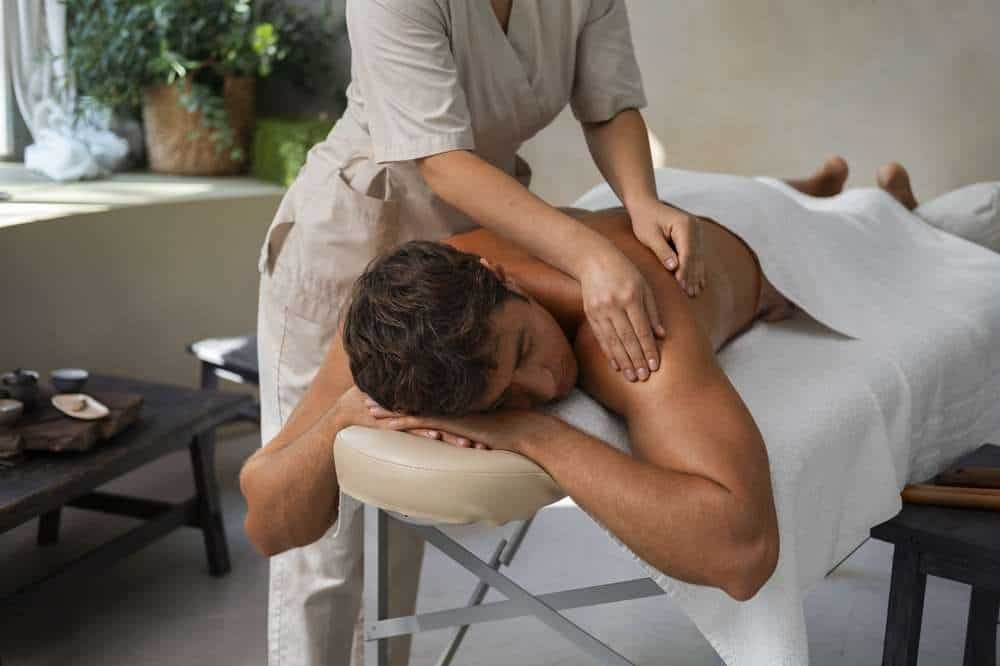
Table of Contents
Understanding the Basics of Full Body Massage
Full body massage therapy encompasses various techniques designed to promote relaxation, relieve muscle tension, enhance circulation, and support mental clarity. Whether you’re experiencing stress, chronic pain, or simply seeking relaxation, full body massages offer diverse and powerful benefits. Historically rooted in ancient cultures, from Ayurvedic traditions in India to Chinese and Egyptian healing practices, full body massage has evolved to suit modern wellness needs while preserving its holistic foundation.
Today, full body massage therapy is widely integrated into both wellness centers and clinical environments, showing its versatility and broad acceptance. It’s often recommended by physiotherapists, chiropractors, and general practitioners as a complementary treatment for a variety of physical and mental conditions.
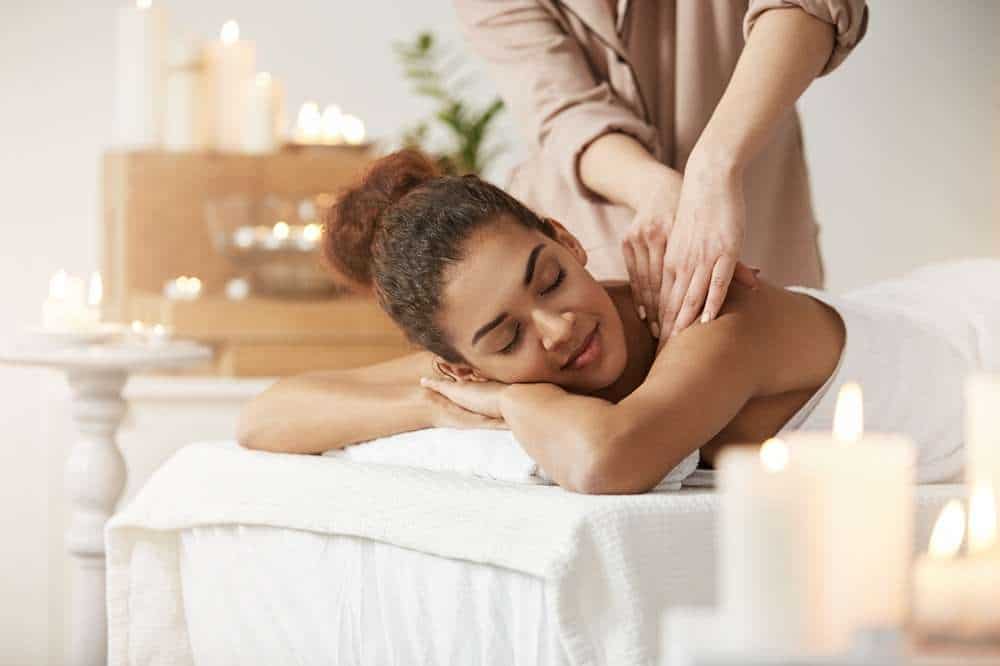
Types of Full Body Massage Techniques
🌿 Swedish Full Body Massage: Features gentle, long strokes, kneading, rhythmic tapping, and circular movements designed to energize the body and promote relaxation.
👉 Want to discover why this is the most popular massage worldwide? Read our full guide to Swedish Massage.
💪 Deep Tissue Full Body Massage: Specifically targets deeper muscle layers and connective tissues, highly beneficial for individuals experiencing chronic muscular pain or tension.
♨️ Hot Stone Massage: Involves placing heated stones on key points of the body, aiding in deep muscle relaxation and stress relief.
🧘♀️ Thai Massage: Combines stretching and deep pressure applied along energy pathways, significantly enhancing flexibility and relieving muscle tension.
🌸 Aromatherapy Massage: Integrates essential oils into massage techniques, promoting emotional and physical relaxation and improving mood.
🦶 Reflexology: Focuses on stimulating pressure points on hands and feet, linking directly to various bodily organs and systems, promoting overall health.
👐 Shiatsu Massage: Japanese technique involving rhythmic pressing and stretching, stimulating the body’s natural healing processes.
🥥 Lomi Lomi Massage: A Hawaiian technique employing continuous flowing strokes, deeply relaxing the body and mind.
💆 Balinese Massage: Combines gentle stretches, acupressure, reflexology, and aromatherapy to stimulate the flow of blood, oxygen, and energy.
🎋 Ayurvedic Massage (Abhyanga): Uses warm herbal oils and synchronized movements to restore balance and detoxify the body according to Ayurvedic principles.
👉 Curious about how this ancient Indian practice supports your mind and body? Explore our full guide to Ayurvedic Massage.
At a Glance: Key Benefits
💡 Quick Summary: Full body massage supports relaxation, improves circulation, relieves chronic pain, enhances sleep, boosts immunity, and contributes to emotional balance. It is both a luxurious and medically-supported form of self-care.
Discover how lymphatic massage enhances detoxification and immune support →
Extensive Benefits of Full Body Massage
Regular full body massage sessions offer numerous scientifically-backed benefits:
😌 Stress Reduction: Proven to significantly decrease cortisol levels, reducing stress and anxiety.
🩸 Improved Circulation: Enhances blood flow, delivering oxygen and nutrients more efficiently throughout the body.
🩹 Pain Relief: Highly effective in alleviating chronic pain conditions, including back pain, arthritis, headaches, and neck stiffness.
😴 Improved Sleep Quality: Encourages deeper sleep by elevating serotonin levels, aiding insomnia sufferers.
🛡️ Enhanced Immunity: Stimulates lymphatic drainage, boosting the immune system’s response.
🤸 Increased Flexibility: Regular massage promotes better joint mobility and muscle elasticity.
🧠 Mental Clarity: Improves concentration and cognitive function by reducing mental fatigue and stress.
😊 Mood Enhancement: Boosts endorphin production, elevating mood and reducing symptoms of depression and anxiety.
🫀 Cardiovascular Support: Helps regulate blood pressure and heart rate over time through relaxation response.
🦷 Jaw and Facial Tension Relief: Special techniques relieve TMJ symptoms and reduce facial strain.
👣 Improved Posture: Relieves muscle imbalances and spinal misalignment caused by sedentary habits.
🔁 Detoxification: Assists the body’s natural detox systems by improving lymph flow and flushing toxins.

Scientific Validation of Full Body Massage
Several reputable medical sources, including the Mayo Clinic, Cleveland Clinic, and the National Institutes of Health (NIH), highlight the therapeutic benefits of massage. Research indicates that full body massage therapy can:
- Reduce inflammation and muscle stiffness in individuals with fibromyalgia
- Lower anxiety and improve mood in patients with depression
- Alleviate postoperative pain and accelerate recovery
- Enhance white blood cell activity, strengthening immune response
A 2022 Cleveland Clinic report noted that patients receiving weekly full body massages experienced significant improvements in pain levels, anxiety, and mobility after only four sessions. The touch element alone is believed to have healing qualities by calming the nervous system and improving heart rate variability.
Preparing for Your Massage Session
Optimize your massage therapy experience with these simple preparation tips:
💧 Stay hydrated before and after your session to support the detoxification process.
🍽️ Avoid eating heavy meals immediately before your massage.
🗣️ Clearly discuss your specific preferences and health concerns with your therapist beforehand.
🕒 Arrive early, allowing yourself to relax and unwind fully.
👚 Wear comfortable clothing to ease your transition before and after your massage.
📋 Complete any intake forms honestly, especially if you have health conditions or allergies.
🔕 Turn off your phone or put it on silent to remain fully present during the experience.
🌬️ Practice calm breathing before and during the session to deepen relaxation and aid muscle release.
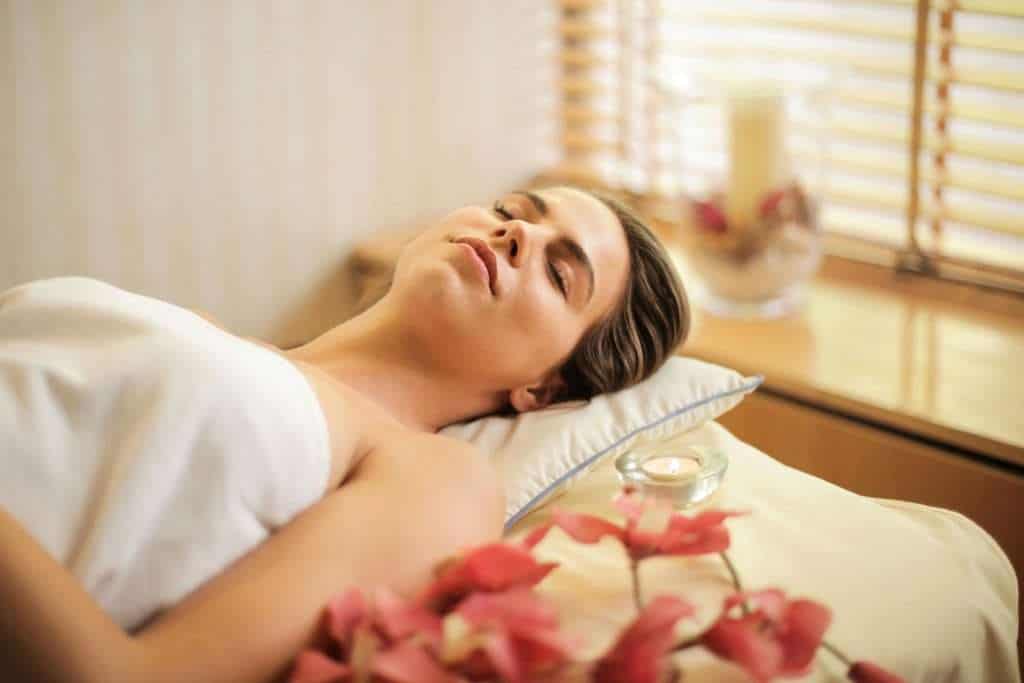
What Happens During a Full Body Massage Therapy Session?
A typical full body massage session ranges from 60 to 90 minutes. You’ll relax on a comfortable massage table, usually partially or fully unclothed but discreetly covered by sheets or towels. Your therapist will use oils or lotions to enhance smooth, fluid massage strokes and gentle manipulations from your head to your feet, addressing each muscle group comprehensively in a true head to toe massage experience.
The session often begins with lighter strokes to warm the muscles, followed by more focused work on areas of tension. Depending on your goals, your therapist may spend more time on problem areas such as the back, neck, or shoulders. Breathing deeply and remaining mindful during your massage can heighten its relaxing effects.
You may experience a range of sensations during the session—from deep relaxation to occasional discomfort if working on tight muscles. Always communicate with your therapist if pressure needs adjusting.
A head to toe massage approach ensures that no area is neglected, making it one of the most complete therapeutic treatments available.
How to Give a Full Body Massage
👐 Basic Guide for Giving a Full Body Massage: While professional training is ideal, you can give a simple, relaxing massage at home by following these general steps:
- Create the Right Atmosphere: Choose a quiet, warm space. Use soft lighting and calming music. A comfortable bed or padded floor mat can work if you don’t have a massage table.
- Use a Light Massage Oil or Lotion: Warm a small amount between your hands to prevent discomfort.
- Start at the Shoulders and Back: Use broad, gentle strokes to warm the muscles. Apply firmer pressure with thumbs or palms to relieve knots.
- Move to Arms and Legs: Use long, sweeping strokes from extremities inward. Knead with fingertips or knuckles for tension.
- Finish with Neck, Head, and Feet: Apply light circular motions to relax the scalp and neck. Gently press and rotate the feet.
- Keep Communication Open: Ask the person about pressure and comfort often. Adjust based on their responses.
This kind of home massage can be a wonderful bonding experience and stress reliever, but always avoid deep pressure on the spine or joints, and never massage if you’re unsure due to medical conditions.
💆♂️ Learn How to Give a Man a Full Body Massage – Discover the best techniques, pressure points, and step-by-step methods to provide ultimate relaxation. Read More
💆♀️ Master the Art of Massaging a Woman Effectively – Learn how to create a soothing and rejuvenating experience tailored for a woman’s needs. Read More
Ideal Candidates for Full Body Massage
While beneficial for almost everyone, some individuals find full body massages particularly advantageous:
🏃 Athletes: Accelerates muscle recovery and reduces injury risk.
😰 Individuals with High Stress: Regular massage helps manage stress-related health issues.
🤕 Chronic Pain Sufferers: Effective for pain relief in conditions like fibromyalgia, arthritis, and chronic muscle tension.
🤰 Pregnant Women: Prenatal massages alleviate pregnancy-related discomfort (consult with your healthcare provider first).
👵 Seniors: Improves mobility, reduces pain, and enhances overall wellness in older adults.
🧑💻 Office Workers: Addresses tension and stiffness resulting from prolonged sitting and poor ergonomics.
🧠 Individuals with Anxiety or PTSD: Gentle full body massage therapy may help calm the nervous system and improve emotional regulation.
🎓 Students: Helps relieve study-related tension and mental burnout during exam seasons.
Massage and Mental Health
🧘♂️ Massage as a Tool for Emotional Wellbeing: Full body massage has increasingly been recognized for its impact on mental health. Beyond the physical benefits, the nurturing human touch, rhythmic movements, and calming environment help regulate the nervous system and reduce symptoms of anxiety and depression.
🧠 Reduction of Cortisol and Boost in Serotonin: Studies show that massage can lower cortisol (the stress hormone) and elevate serotonin and dopamine—neurochemicals that play a crucial role in mood regulation and emotional balance.
🫂 Support for Trauma and PTSD Recovery: For individuals dealing with past trauma or PTSD, gentle massage in a safe, consent-driven environment can help reintroduce safe touch and foster a sense of grounding. Therapists trained in trauma-informed care can tailor the session for emotional comfort as well as physical relief.
💬 Holistic Healing: Many mental health practitioners now recommend massage as a complementary therapy alongside counseling or medication. Its non-verbal, body-based nature makes it accessible even when talk therapy feels overwhelming.
Risks and Contraindications
While full body massage is generally safe, there are scenarios where caution or medical clearance is necessary:
🚫 Recent Surgery or Injury: Massage may interfere with healing or cause complications.
🚫 Skin Infections or Open Wounds: Avoid massage until cleared by a doctor.
🚫 Blood Clotting Disorders: Massage may dislodge clots, increasing risk.
🚫 High-Risk Pregnancy: Only see a certified prenatal therapist and check with your OB-GYN.
🚫 Contagious Illnesses: If you’re sick, it’s best to reschedule.
If you’re unsure whether massage is safe for your situation, always consult a healthcare provider first.
How to Choose a Qualified Massage Therapist
Finding the right therapist enhances both safety and benefits:
✔️ Check Certifications: Look for qualifications from respected bodies like AMTA, ABMP, or your local regulatory authority.
✔️ Read Reviews: Verified testimonials help gauge experience and professionalism.
✔️ Ask About Specializations: Some therapists focus on sports recovery, prenatal massage, or chronic pain relief.
✔️ Hygiene and Cleanliness: A professional therapist maintains a clean, inviting workspace.
✔️ Communication Style: A good therapist will listen to your goals, concerns, and feedback.
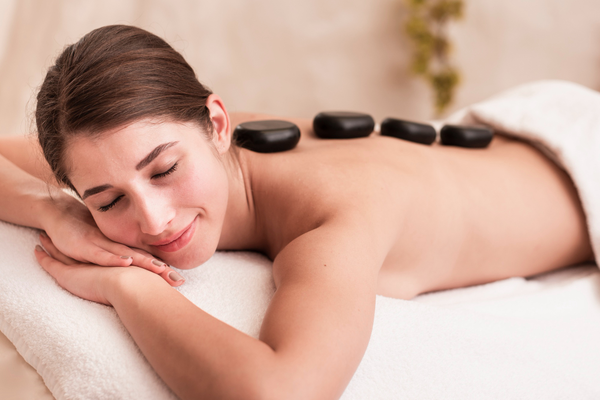
Frequently Asked Questions
❓ How frequently should I get a full body massage? Regular sessions, typically bi-weekly or monthly, provide optimal results depending on individual stress and health goals.
❓ Is full body massage suitable for everyone? Generally, yes, but individuals with health conditions should always consult a healthcare provider first.
❓ Should I fully undress for my massage? Only undress to your comfort level. Therapists ensure privacy and modesty throughout the session.
❓ Can I choose specific oils or lotions? Yes, always inform your therapist of your preferences or any allergies and sensitivities.
❓ What care should I take post-massage? Hydrate adequately, rest if possible, and avoid vigorous activities immediately afterward.
❓ Can I receive a massage if I have a medical condition? Massage is generally safe but always consult your physician if you have heart issues, skin conditions, or recent surgeries.
Expert Recommendations
Professional massage therapists and health organizations, such as the American Massage Therapy Association (AMTA), strongly advocate integrating regular massages into health and wellness routines. Routine massage therapy significantly promotes physical and emotional health, creating a balanced and holistic lifestyle.
The World Health Organization also recognizes massage therapy as a complementary approach for managing musculoskeletal pain and improving quality of life. Many integrative medicine programs now include massage therapy as a standard component of patient care.
Leading practitioners often recommend combining full body massage with other wellness strategies like stretching, yoga, or physiotherapy for compounded benefits.
Final Thoughts: Is a Full Body Massage Right for You?
Massage is not just a luxury—it’s a clinically supported tool for mental and physical well-being. As the Mayo Clinic notes, massage can be an important part of integrative medicine, offering relief for anxiety, digestive disorders, headaches, and even fibromyalgia (Mayo Clinic). Similarly, the Cleveland Clinic emphasizes massage’s role in reducing cortisol and increasing serotonin, helping patients manage chronic stress more effectively (Cleveland Clinic).
Incorporating full body massage therapy into your wellness plan offers profound benefits, enhancing your overall health, reducing stress, and improving quality of life. A consistent massage routine serves as an essential self-care practice, beneficial for physical, emotional, and mental health.
Whether you’re a busy professional, a parent, an athlete, or someone seeking a deeper sense of calm, full body massage therapy can become a cornerstone of your self-care ritual. With the right approach and a skilled therapist, it becomes much more than a luxury—it becomes a necessity.
Embrace full body massage as an essential part of your wellness journey today. Looking for other massage types? You may also benefit from targeted methods like lymphatic drainage massage for gentle detox support. Your body and mind will thank you.
📖 References
For additional information on the benefits and techniques of full body massage, explore these authoritative sources:
- Harvard Health – The Power of Massage: https://www.health.harvard.edu
- Mayo Clinic. “Massage: Get in touch with its many benefits.” https://www.mayoclinic.org
- Cleveland Clinic. “Health Benefits of Massage Therapy.” https://health.clevelandclinic.org
- National Institutes of Health (NIH). “Massage Therapy for Health Purposes.” https://nccih.nih.gov
- American Massage Therapy Association (AMTA). “Research and Massage Therapy.” https://www.amtamassage.org
- World Health Organization. “Benchmarks for Training in Traditional/Complementary and Alternative Medicine: Massage Therapy.” https://www.who.int
⚠️ Disclaimer:
This article is for informational purposes only and does not constitute medical advice. Always consult with a licensed healthcare provider or certified massage therapist before beginning any new treatment, especially if you have pre-existing health conditions or concerns.

